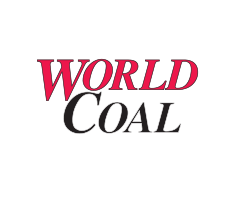NETL's Coal-Derived Additive Enables Stronger and More Durable Cement at Reduced Cost

By Stephanie Roker
November 3, 2019 - In an effort that could ultimately help create new jobs and markets for coal, NETL researchers have developed a low cost, coal-derived cement additive that could lead to the construction of stronger and more durable roads and buildings.
Drawing upon their experience in converting coal to advanced materials and products, the NETL team has taken a new approach to synthesizing graphene, a unique form of carbon only one atom thick. When added to cement, graphene imparts significant molecular level improvements to the material’s mechanical strength, electrical conductivity and overall durability.
“By using abundant coal feedstocks, we are synthesizing graphene that is 50 - 100 times less expensive than the usual method of using graphite,” said Yuan Gao, Ph.D., who works on NETL’s functional materials team. “Graphene created from graphite is too expensive to be feasible for commercial-scale cement applications, but our lower cost, coal-derived graphene represents a critical first step for commercialization.”
This research has attracted industry interest, and among other partnerships, the Lab launched a cooperative research and development agreement in 2018 with Ramaco Carbon, a vertically integrated coal technology company based in Wyoming that combines coal resources with advanced research and modern manufacturing techniques to develop new products from coal. NETL has also leveraged a strategic partnership with Oak Ridge National Laboratory through a memorandum of understanding in 2018 that is enabling research on new ways to use coal to create innovative high value products.
“Beyond just making stronger and more durable building materials, we will soon be investigating how the NETL additive affects the thermal and electrical properties of cement,” said Gao. “Thermally conductive concrete could have applications in radiant concrete floor or pavement systems, so that buildings could be heated or cooled, and walkways could be easily deiced. Electrically conductive cements could incorporate sensors to monitor building stress, environmental conditions or possible material failure.”
This work is one example of how NETL is expanding the US coal value chain and extracting the full potential of coal resources by manufacturing carbon products directly from coal instead of using petrochemical or biomass feedstocks.

